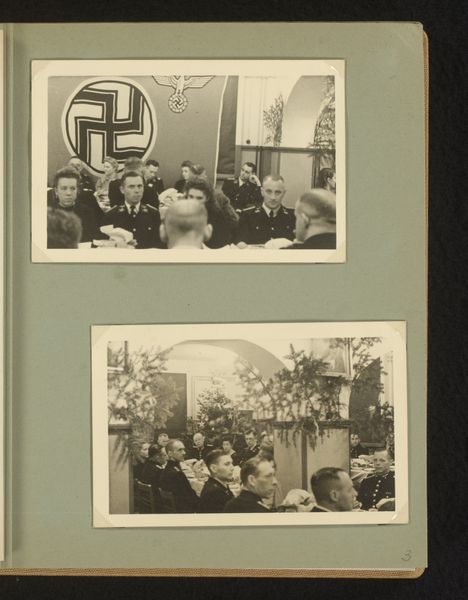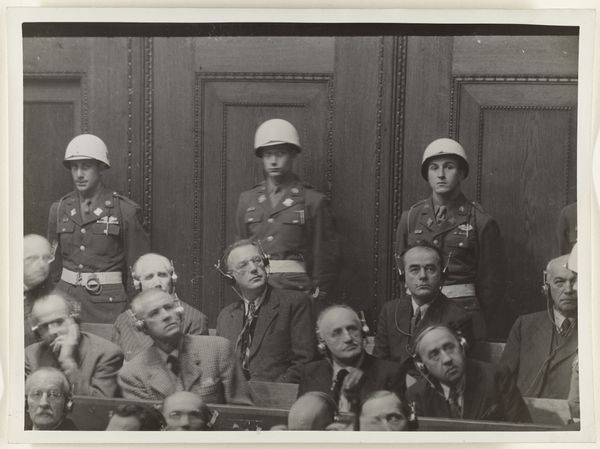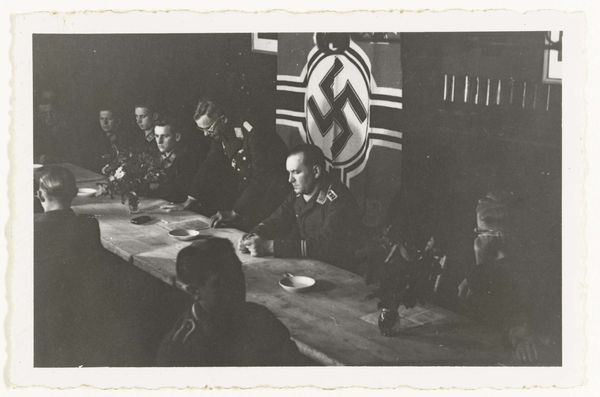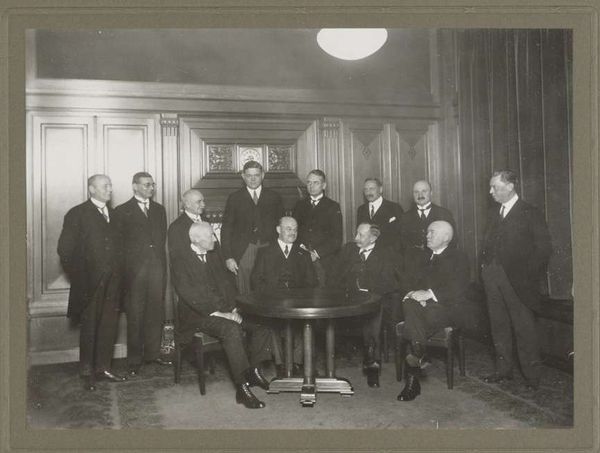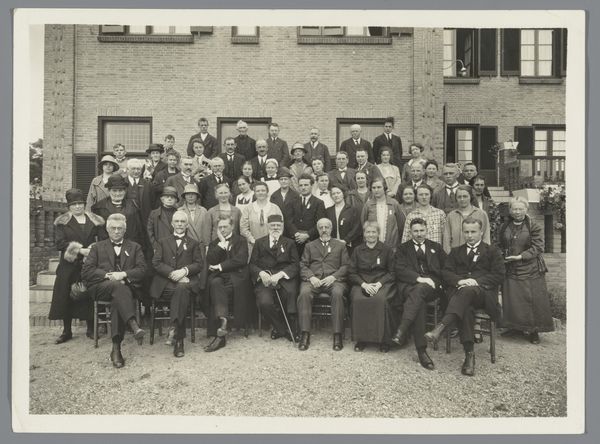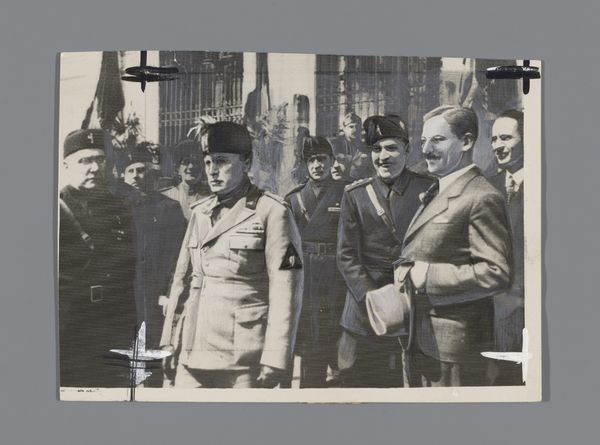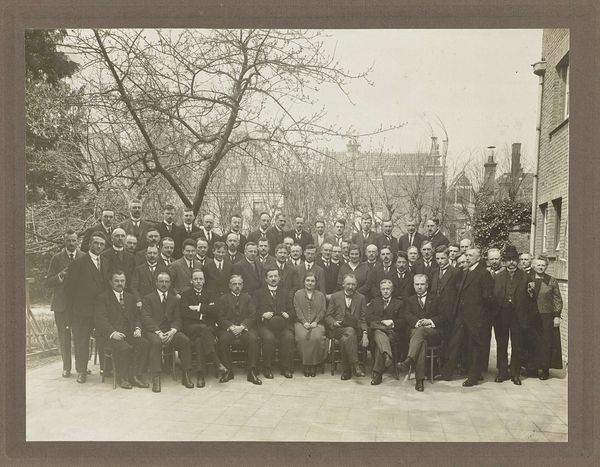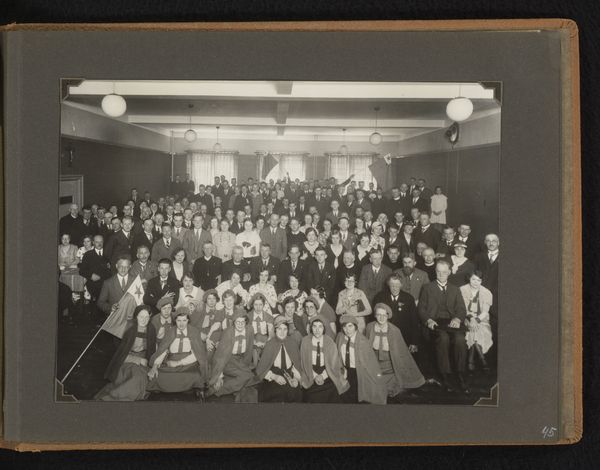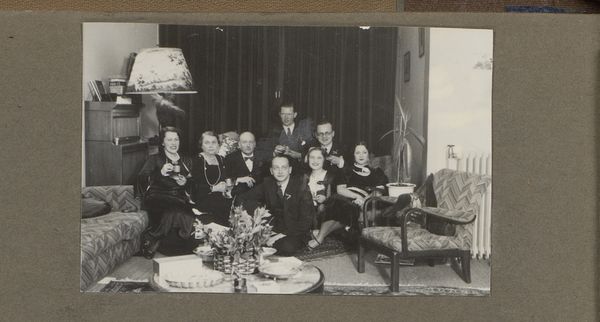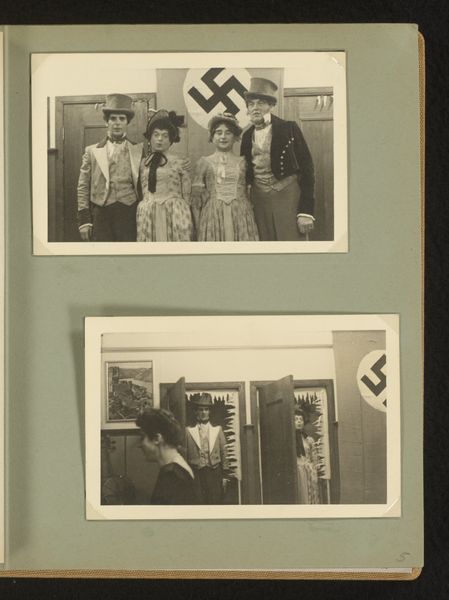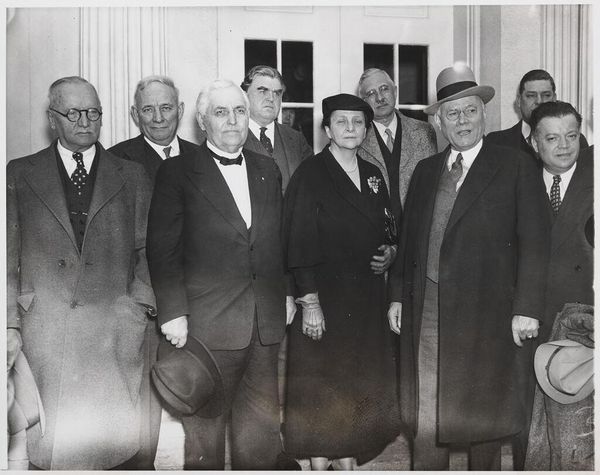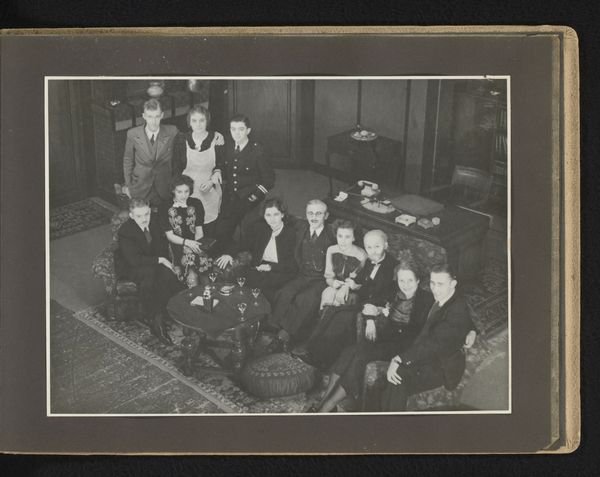
Dimensions: height 100 mm, width 150 mm
Copyright: Rijks Museum: Open Domain
This photograph, part of the Estate of Isabel Wachenheimer, presents a chilling tableau. The stark black and white tones lend it a sense of historical weight and foreboding. Consider the composition. The figures are rigidly posed, arranged in neat rows that create a sense of order and control, yet the swastika looms large behind them, disrupting any pretense of normalcy. It's a visual signifier, loaded with meaning, dominating and dictating the scene's interpretation. The portrait adds another layer, a face representing authority, carefully positioned as the focal point. The photograph isn't just a record; it's a constructed image, designed to convey power, unity, and ideology. This image serves not only as documentation but also as a chilling example of how photography can be used to normalize the most destructive forces. It reminds us that visual forms always participate in larger structures of meaning.
Comments
rijksmuseum almost 2 years ago
⋮
The German Eugen Wachenheimer had a brilliant career at the Deutsche Bank and served as a naval officer in the First World War. In 1922 he married Else Moos. The Anti-Jewish laws instituted by the Nazi regime forced them to flee to the Netherlands in 1937. The photograph at the lower right is the last one taken of Eugen. He stands with his back to the camera behind his daughter. Eugen and Else were gassed at Auschwitz-Birkenau in 1944.
Join the conversation
Join millions of artists and users on Artera today and experience the ultimate creative platform.
